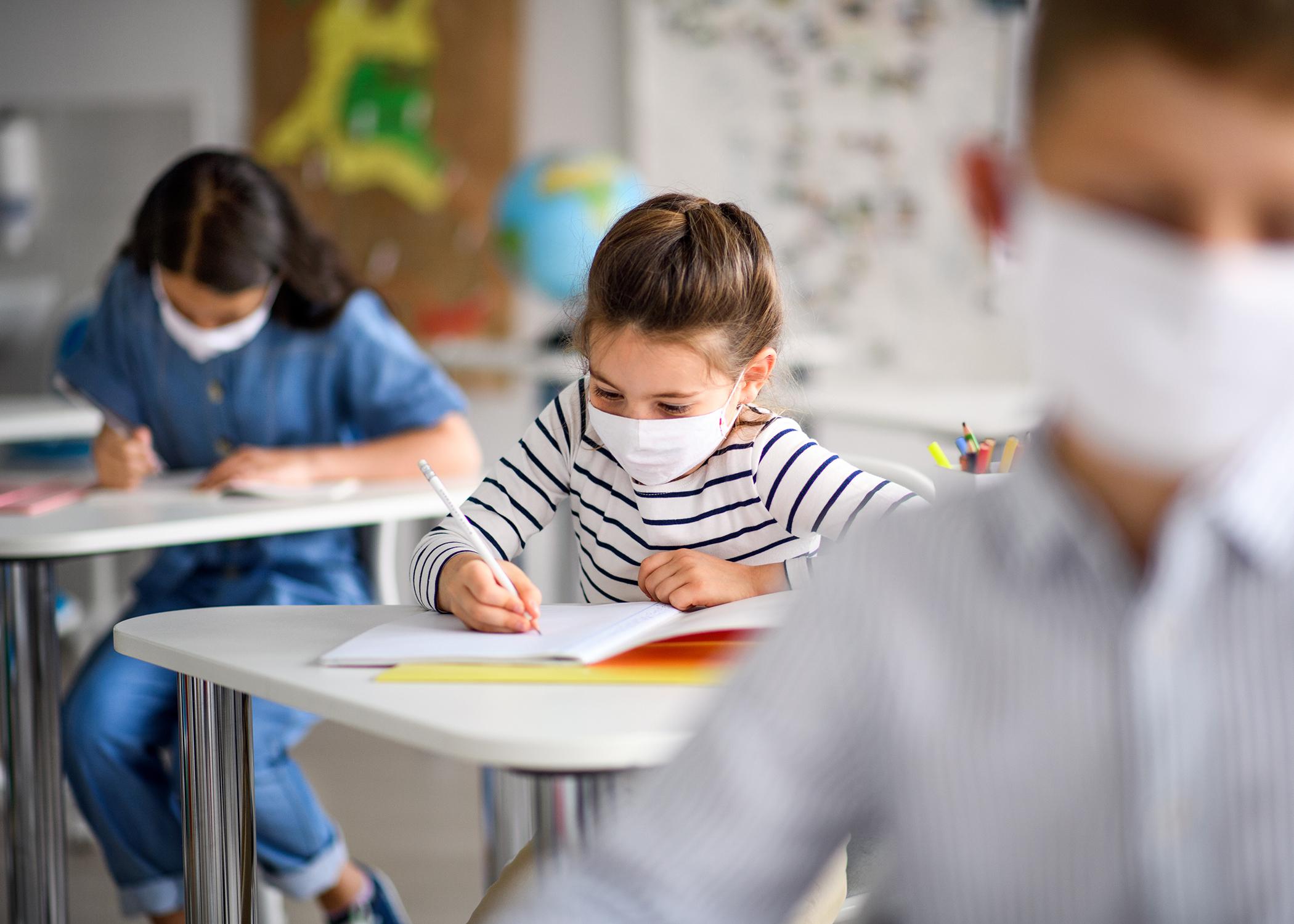Information Possibly Outdated
The information presented on this page was originally released on July 28, 2020. It may not be outdated, but please search our site for more current information. If you plan to quote or reference this information in a publication, please check with the Extension specialist or author before proceeding.
Prepare children for new rules at school
RAYMOND, Miss. -- Parents can help children understand how to stay healthy at school amid the COVID-19 pandemic as they prepare for the start of the academic year.
“Parents are children’s first teachers, and it is important for them to reinforce the benefits of safe practices when returning to school or participating in any public activities,” said David Buys, Mississippi State University Extension Service health specialist. “Children need to know the risks of COVID-19, and we have to devote time to giving them developmentally appropriate messages and explaining the importance of preventive behaviors like good hand hygiene, wearing a face covering, physical distancing and others.”
Based on current knowledge, most children who contract the illness exhibit limited or no symptoms. Whether or not they have symptoms, children who contract COVID-19 can transmit the disease to family members, school employees and other adults, who could become very ill or die, Buys said.
“This is one of the main reasons our health experts recommend children take the same precautions as adults,” said Buys, who is the father of three young children.
Many children going back to the classroom will be required to wear face coverings. Explaining why this is important is just part of the process, especially for young children, said Melissa Tenhet, director and instructor at the MSU Child Development and Family Studies Center.
“This process isn’t just about discussion, but actually preparing,” said Tenhet. “Children have to be able to put on and take off masks by themselves. So, they need to practice at home.”
She said parents may need to try different masks for their children to find the right one.
“There are a lot of different types of masks out there. There is not a one size fits all. Think about what type of material will work and whether they need ear loops or not. In my experiences with children at the center in the last 6 weeks, young children need a mask with ear loops or elastic straps. They have a hard time with tying masks,” Tenhet said.
In addition to practicing wearing masks at home, Tenhet also offered these tips:
- Make wearing a mask fun. Let them choose from two appropriate options when they pick out their clothes. This helps the child feel in control, and the adult also will be happy.
- Pack an extra mask in a zip-top bag in case the one they are wearing gets wet or soiled.
- Washable masks must be cleaned in the washing machine. Have enough to get through the week.
- Wear one mask per day unless it becomes contaminated. Wash washable masks after each day of use. Throw away disposable masks daily.
- Wear the mask correctly at all times. It should cover the nose and mouth. Do not remove it to talk to others.
- Touch only the ear loops, ties or elastic to put on and take off the mask. If the front of the mask is touched, wash hands afterward.
- Be a role model. Practice with your children, and wear a mask when appropriate.
- Watch a kid-friendly video that explains the process and why we should all wear masks. It can help start the conversation.
Tenhet also said parents can help their children learn to wear masks by communicating clearly.
“Tell children what you want them to do instead of what you don’t want them to do,” she said. “Replace negative words, like stop, no and don’t with what you want them to do. For example, instead of saying, ‘Stop touching your mask,’ say, ‘Keep your hands away from your mask.’”
Schools across the state are implementing their own policies based on guidelines provided by the U.S. Centers for Disease Control and Prevention. Not all schools and districts will have the same rules. Parents should closely monitor their school’s requirements throughout the COVID-19 pandemic, Tenhet said.
Although some parents, guardians and other adults in children’s lives may disagree with the school’s policies, Tenhet said adults should not discuss this issue with children or in front of them.
“Don’t express or share negative feelings about the school’s policies,” she said. “Remember, children are always listening, even when you think they aren’t. Adult talk needs to be between adults.”
In addition to discussing COVID-19 and how to slow the spread, it is important to model these behaviors, Buys said. This example can help ease concerns about returning to school for both children and parents.
“Do the same things at home that you should do elsewhere: good hand hygiene, physical distancing, cleaning spaces frequently, wearing a face covering and minimizing visits in public spaces. It is a good idea to avoid face-to-face contact, especially with older adults in the family,” he said.
Tenhet recommends the following videos to help children understand why and how to wear a mask:
- “Making Masks Fun: Tips for Helping Your Child Wear a Face Mask” from a certified child life specialist with the C.S. Mott Children’s Hospital.
- “How to Make a Mask Easily by Elmo and Dr. Sanjay Gupta” on YouTube.
- “Wearing a Mask in Public” by the University of Mississippi Medical Center.
Learn more about the CDC’s guidance for schools on its website.









